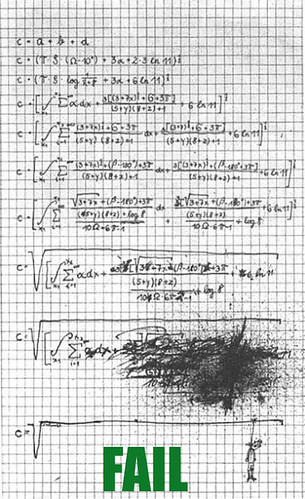
The following is cross-posted at www.fiscalaccountability.org:
Only days before the big data launch – on Friday, the Recovery Board is set to release "stimulus" data from more than 120,000 recipient entitites – the stories calling into question the job-creation figures, and with that the Administration’s "jobs saved/created" metric are piling on.
The News-Leader in Springfield, Missouri is reporting that that a diving company received stimulus dollars to work on a project which had a seven-man team of divers from Kentucky spend four days retrieving a broken steel turbine blade from the bottom of Stockton Lake. The report submitted to the Recovery Baord claimed the project“created or saved” 7.5 jobs, but failed to point out that the project duration was four days – and none of the employees working on the project would have lost their job if it hadn’t been for the funding.
Similarly, Kentucky’s Courier Journal reports that:
The first detailed reports on federal stimulus spending in Kentucky are riddled with inaccuracies — including projects that aren’t even in the state.
The national data, released Oct. 15, show that stimulus dollars have created or saved nearly 870 jobs in Kentucky and about 330 in Indiana. But across the United States watchdog groups are casting doubt on the data’s overall accuracy.
(…)
The data also indicates that SRS Inc. of Gallatin, Tenn. has saved or created at least 15 jobs on construction and renovation projects at Fort Campbell.
But those projects weren’t funded by stimulus money, said Monte A. Edwards, the company’s executive vice president of marketing and business development.
“They should not be, as they are not stimulus funded,” Edwards said in an e-mail.
But the problems do not end with the data so far submitted. As the Financial Times reports, colleges are currently scratching their heads about guidance they are being given on how to count "stimulus"-funded jobs as their numbers are due to be reported by Friday of this week:
In a bid to be transparent yet not over-complicate things, the White House Office of Management and Budget asked recipients to calculate one single number for “jobs created and retained”. To avoid overstating the effects of the money, it offered a simple formula to use: add up the number of hours of work the stimulus money paid for and divide by the number of hours in a typical full-time job. The problem, though, is that this formula gives no guidance on how to distinguish or strip out jobs that would have continued to exist anyway.
As a result, many universities including UCLA decided simply to count up everyone who is paid through a stimulus grant, in accordance with the formula. Others have excluded tenured academics from their data, after taking legal advice, amid what they say was a lack of clarity from the government on how to deal with the issue.
And you may recall the story from the Indy Star, which reported that state officials sent in a report to the federal government stating they had supported 16,000 jobs with "stimulus" funds.
The 16,000 jobs number the state has reported to the federal government is based on the $2.3 billion expected to pass through Indiana’s government. But 13,232 of these jobs were tied to $610 million in so-called "fiscal stabilization funds" sent to Indiana to help support its state budget. Daniels chose to use that money as a substitute for a regular appropriation to K-12 schools, freeing up existing state funds to maintain Indiana’s budget surplus.
Consequently, and in line with the federal guidance, officials included those 13,000-plus teaching and school staff jobs supported by federal "stimulus" dollars were included in the state’s report. So more than 13,000 jobs of the 16,000 the state reported to the federal government under the "saved/created" category already existed.
This all could really be just the tip of the proverbial iceberg. Let’s see what the data launch brings on Friday.
Photo credit: mad LOLscientist

